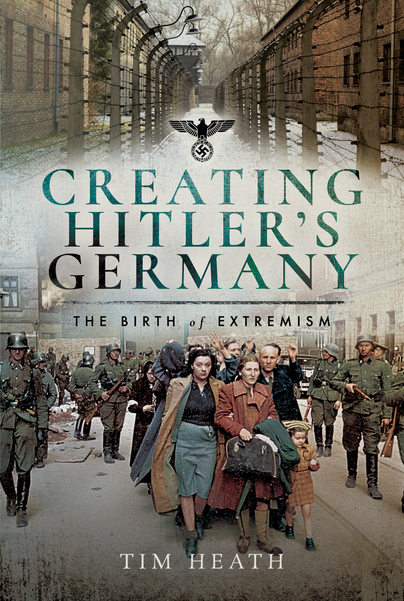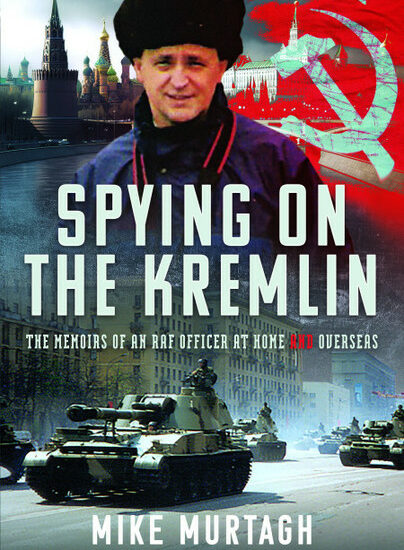Author Guest Post: Tim Heath
The Birth of Extremism
Creating Hitler’s Germany
This book was one I wrote specifically to try and understand what led Germany to be ultimately responsible for two of the greatest tragedies of the 20th Century, the First and Second World Wars. One could argue that the Second World War was merely an extension of the first, yet the events leading to both were entirely different in circumstance.
While Germany’s involvement in WW1 may well have been in aid of regional allies, her defeat in WW1 would however have severe consequences over the years that followed 1918.
The French brokered Treaty of Versailles and subsequent war reparations that Germany was obliged to comply with in the eyes of many were not considered unduly harsh when compared with the damage and loss of life Germany had been responsible for.
The great depression that hit every country around the world from 1929 and into the 1930’s hit Germany particularly hard. Hyperinflation soon began to bite; families could not afford to eat or keep warm over the harsh winter months and the child mortality rate rose alarmingly. These factors combined with the political and social instability, where rival political groups brawled on the streets made Germany the perfect breeding ground for a new political force known as the National Socialist German Workers Party or Nazi Party for short. With former WW1 German Army Corporal Adolf Hitler soon installed as the party’s charismatic leader, amidst all of this chaos the Nazi Party began to gain the support of the German people. Hitler and the Nazis blamed Jews for much of Germany’s misfortune along with the equally despised Weimar government who Hitler viewed as weak willed and traitors to the German people.
When Hitler first began speaking in public, he was addressing relatively small crowds of 100 to 200 people. As support for the Nazis gathered momentum with promises of a new social prosperity and of making Germany great once again that support soon grew to thousands. What was once just another fledgling political party had grown into a significant political force by which Hitler could use to seize power in Germany.
Hitler and the Nazi Party would win the 1933 Federal Election in Germany. Political opposition had been subject to violence and intimidation well before the elections got under way. Despite this the Nazi Party tallied 43.9 percent of the vote, falling well short to achieve a majority. Hitler courted the support of the Nazis coalition partner The German National People’s Party (DNVP) in order to secure a bare working majority in the Reichstag. Two weeks after the elections Hitler was able to pass an enabling act with the support of all non-socialist parties, this gave Hitler the dictatorial powers he had so craved. All other political parties were soon banned, and the Nazis had total control of Germany.
Creating Hitler’s Germany follows three families through the years before, during and after WW1 and into WW2. The book also covers the personal experiences of others including soldiers, airmen and those who were just ordinary citizens. None have ever talked previously to anyone of their experiences.
Melitta Jorg the daughter of a wealthy German Jewish family who fled Germany before violence against Jews became commonplace offers some sometimes amusing narrative to the book as she recalls her own memories of the times.
The Kohlmann family journals make for particularly hard reading as we learn of one young man’s life being shaped by the events going on around him, events which would make an otherwise ordinary young man into a vengeful killer within the ranks of the Waffen SS and later the Gestapo. Alexander Kohlmann was a man who many would say had no heart and conducted his business either with his fists or through the barrel of a gun, yet he was also a doting father to his two daughters who today still struggle with their fathers past legacy.
The whole feel of this book which took me around six months to write is perhaps exemplified by the words of a Waffen SS soldier in the wheat fields of the East-“the Russians lived in these wooden houses which were merely huts with tin or straw roofing on them. A few shots into these houses with a 2-cm Flak Anti-Aircraft gun firing incendiary ammunition would soon flush out the occupants. I remember seeing the children running from these houses and squealing like piglets as they ran through the crops of wheat, there would be the burst of fire from an MP40, rifle or machine gun and they would all be dead”.
Creating Hitler’s German: The Birth of Extremism focuses on that very brand of extremism where violence, corruption, murder and abuse would lead Germany to its greatest disaster to date and leave it a nation in ruin with the deaths of millions of innocent people on its conscience by the wars end in 1945. Some would struggle in coming to terms with this psychological burden whilst others wouldn’t. It is yet another book of pain which provides essential reading for those wishing to understand Germany’s journey to extremism, war and ultimately genocide during a particularly turbulent part of the 20th Century.
All the material within this book was given freely and my approach throughout its formulation was again to write in a ‘warts n all’ context censoring nothing out. That is exactly the way I like to work and not everyone is appreciative of this method. I sometimes receive nasty emails from those who think that writing on the Third Reich era somehow constitutes support for Nazi ideology. I have to admit at being concerned sometimes by the level of prejudice now aimed at not only Third Reich history books and research but living history and re-enactment of this genre.

You can order a copy here.

